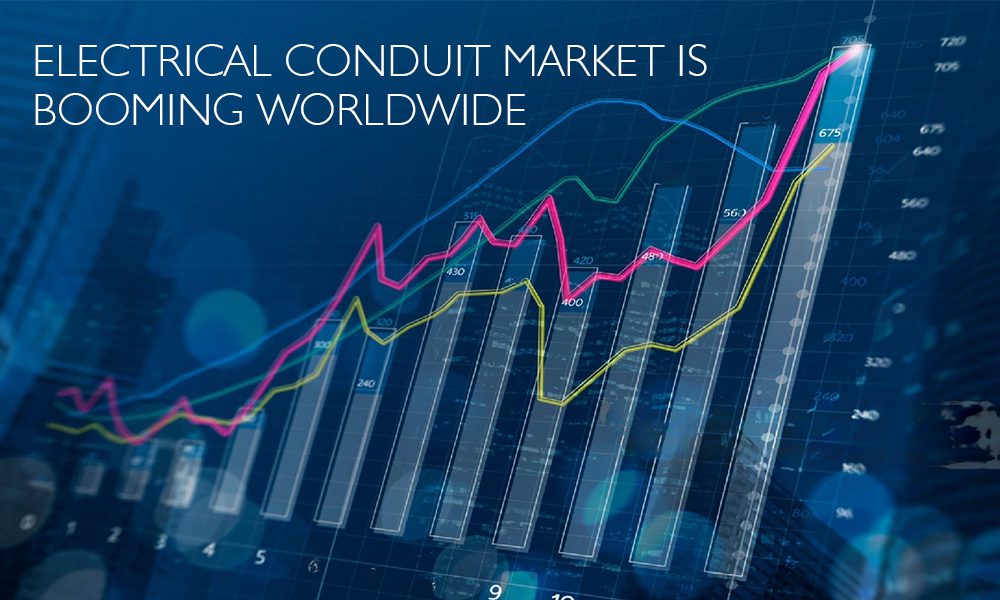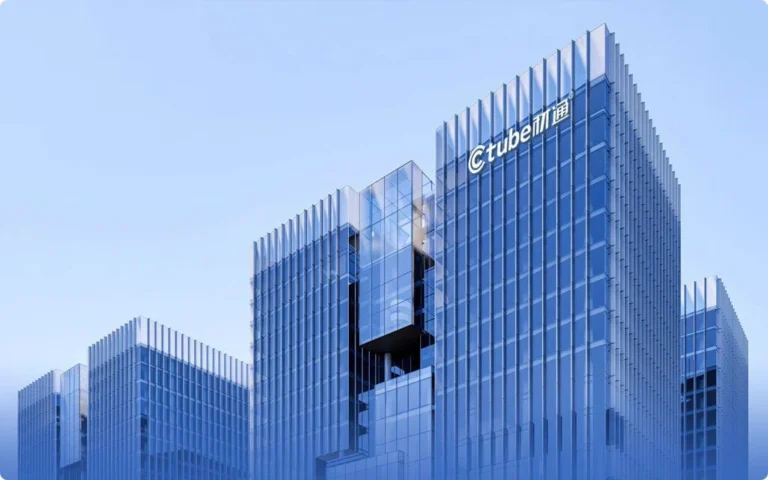Tabla de contenido
PalancaLos conductos eléctricos son estructuras tubulares fabricadas con materiales como metal, plástico o PVC, diseñadas para proteger los cables y el cableado eléctrico. Desempeñan un papel fundamental a la hora de garantizar una gestión segura y organizada de los cables, protegiéndolos de factores ambientales, daños físicos e interferencias electromagnéticas. Las aplicaciones de los conductos eléctricos abarcan diversas industrias, incluidos los sectores residencial, comercial e industrial.
Demanda y aplicaciones crecientes:
En la era digital actual, la demanda de soluciones de gestión de cables eficientes y confiables ha aumentado. La creciente dependencia de tecnologías como la transmisión de datos, las telecomunicaciones y la automatización industrial ha dado lugar a sistemas de cableado complejos que requieren una organización y protección adecuadas, por lo que la necesidad de conductos eléctricos seguros y confiables se ha vuelto más crucial que nunca. Los conductos eléctricos sirven como una vía de protección para cables y alambres eléctricos, lo que garantiza su seguridad y el buen funcionamiento de las redes de distribución de energía, centros de datos, telecomunicaciones e instalaciones de energía renovable. Con sus diversas aplicaciones y una demanda creciente, el mercado de conductos eléctricos está experimentando un crecimiento significativo.
Tendencias de la industria y factores de crecimiento:
El mercado de conductos eléctricos está experimentando un crecimiento significativo debido a varios factores.
- Demanda creciente de desarrollo de infraestructura: la demanda mundial de desarrollo de infraestructura, incluidos proyectos residenciales, comerciales e industriales, está impulsando el crecimiento del mercado de conductos eléctricos. A medida que se construyen nuevos edificios, fábricas y proyectos de infraestructura, la necesidad de sistemas de conductos eléctricos seguros y confiables para proteger el cableado y los cables se vuelve esencial.
- Crecimiento del sector de las energías renovables: la creciente adopción de fuentes de energía renovables, como la solar y la eólica, está contribuyendo al crecimiento del mercado de conductos eléctricos. Los sistemas de conductos son vitales para la instalación de cableado en paneles solares, turbinas eólicas y otras infraestructuras de energía renovable, ya que brindan protección y garantizan una transmisión eficiente de la energía.
- Aumento de la construcción de centros de datos: la proliferación de tecnologías digitales y la demanda de almacenamiento y procesamiento de datos han llevado a la construcción de numerosos centros de datos en todo el mundo. Estos centros de datos requieren sistemas de conductos eléctricos confiables para soportar la intrincada red de cables y cableado, asegurando un suministro de energía y transmisión de datos ininterrumpidos.
- Énfasis en la seguridad y el cumplimiento de los códigos: las normas de seguridad y los códigos eléctricos desempeñan un papel crucial en el mercado de conductos eléctricos. Los gobiernos y los organismos de la industria actualizan y hacen cumplir continuamente los estándares de seguridad, lo que impulsa la demanda de sistemas de conductos que cumplan con estos requisitos. Los fabricantes de conductos se centran en producir productos que ofrezcan características de seguridad mejoradas, como resistencia al fuego, aislamiento y protección contra peligros eléctricos.
- Avances tecnológicos en materiales para conductos: el desarrollo de nuevos materiales y técnicas de fabricación está revolucionando la industria de los conductos eléctricos. Los materiales avanzados, como el polietileno de alta densidad (HDPE), la fibra de vidrio y el acero inoxidable, ofrecen mayor durabilidad, resistencia a la corrosión y flexibilidad. Estos avances brindan a los consumidores una gama más amplia de opciones y contribuyen al crecimiento del mercado.
- Mayor énfasis en soluciones sostenibles y de eficiencia energética: el creciente énfasis en la sostenibilidad y la eficiencia energética está influyendo en el mercado de conductos eléctricos. Los fabricantes de conductos están incorporando prácticas ecológicas en sus procesos de producción y ofreciendo sistemas de conductos que respaldan iniciativas de ahorro energético.
- Adopción de tecnologías de edificios inteligentes: el auge de las tecnologías de edificios inteligentes, incluidos los dispositivos IoT y los sistemas de automatización, requiere una infraestructura de conductos eléctricos sofisticada. Los edificios inteligentes dependen de sistemas de conductos para gestionar y organizar la extensa red de cables y cableado necesaria para una conectividad y un intercambio de datos sin inconvenientes.
Según un informe de Allied Market Research, el aumento de la demanda de sistemas de cableado seguro, junto con el aumento de las actividades de construcción comercial, está impulsando el crecimiento del mercado de conductos para cables. El mercado de conductos para cables se valoró en $4.4 mil millones en 2022, y se proyecta que alcance los $9.3 mil millones para 2032, exhibiendo una tasa de crecimiento anual compuesta (CAGR) de 8.2% de 2023 a 2032. Estas cifras resaltan el sólido potencial de crecimiento y la creciente importancia de la industria de conductos para cables.
En la actualidad, los tipos de conductos eléctricos más utilizados son los conductos de PVC, los conductos metálicos (como el acero galvanizado o el aluminio) y los conductos flexibles. Estos tipos se adaptan a diferentes aplicaciones y ofrecen ventajas únicas.
La elección del conducto depende de factores como la aplicación, el entorno y los requisitos específicos del código eléctrico. A continuación, se indican algunos de los tipos más utilizados:
Conducto metálico rígido (RMC):El RMC es un conducto de alta resistencia fabricado en acero galvanizado o acero inoxidable. Proporciona una excelente protección mecánica y se utiliza a menudo en aplicaciones industriales y comerciales donde se requiere durabilidad y protección de alto nivel.
Conducto metálico intermedio (IMC):El IMC es similar al RMC, pero es más liviano y más rentable. También está hecho de acero galvanizado y brinda una protección mecánica moderada. El IMC se usa comúnmente en aplicaciones comerciales e industriales.
Tubos Metálicos Eléctricos (EMT):EMT es un conducto liviano fabricado con acero galvanizado o aluminio. Es fácil de trabajar y se usa comúnmente en aplicaciones residenciales y comerciales. EMT brinda buena protección contra daños físicos, pero puede no ofrecer el mismo nivel de protección que RMC o IMC en entornos hostiles.
Conducto de PVC:El conducto de PVC (cloruro de polivinilo) es una opción no metálica hecha de material de PVC rígido. Es liviano, fácil de instalar y resistente a la corrosión y la humedad. El conducto de PVC se usa comúnmente en aplicaciones residenciales y comerciales, particularmente donde se requieren conductos no metálicos.
Conducto metálico flexible (FMC):FMC, también conocido como “Greenfield”, es un conducto flexible hecho de tiras de metal enrolladas en espiral, generalmente de acero galvanizado o aluminio. Ofrece flexibilidad y facilidad de instalación, lo que lo hace adecuado para aplicaciones en las que es necesario pasar el cableado alrededor de obstáculos o requiere cambios frecuentes.
Conducto metálico flexible hermético a líquidos (LFMC):El LFMC es similar al FMC pero tiene un revestimiento adicional hermético a los líquidos, generalmente hecho de PVC o caucho termoplástico. Brinda protección contra la humedad, los aceites y otros líquidos y se usa comúnmente en exteriores o lugares húmedos.
Conducto no metálico (NM o Romex):El conducto NM, también conocido como Romex, es un tipo de cable con revestimiento no metálico que incluye varios conductores aislados y un cable de tierra. Se utiliza comúnmente en el cableado residencial para tomas de corriente, interruptores y artefactos de iluminación. Si bien no es un conducto en el sentido tradicional, cumple una función similar: proteger y organizar el cableado eléctrico.
Ctube: Innovación para la industria de conductos eléctricos
Como fabricante personalizado centrado en la investigación y el desarrollo de conductos eléctricos, Ctube se compromete a impulsar la innovación y crear nuevas oportunidades en el mercado. Al mantenerse a la vanguardia de las tendencias de la industria, Ctube tiene como objetivo proporcionar soluciones de vanguardia que satisfagan las necesidades cambiantes de la industria de la gestión de cables. Con una cartera de productos competitiva de PVC rígido y conductos flexibles, Ctube ha emergido gradualmente en la industria eléctrica y se ha convertido en una de las marcas competitivas; cada vez más personas han reconocido a Ctube y los conductos eléctricos de la marca Ctube se han utilizado en cada vez más proyectos a gran escala.
Compromiso de Ctube con la sostenibilidad:
Ctube reconoce la importancia de la sostenibilidad medioambiental y se dedica a desarrollar soluciones de conductos ecológicos. Invertimos activamente en investigación y desarrollo para explorar materiales alternativos y procesos de fabricación que minimicen el impacto medioambiental. Al ofrecer opciones de conductos sostenibles, Ctube tiene como objetivo satisfacer la creciente demanda de soluciones de gestión de cables respetuosas con el medio ambiente.
La industria de los conductos eléctricos continúa evolucionando y adaptándose para satisfacer las necesidades cambiantes del mercado. Con un enfoque en los avances tecnológicos, la sostenibilidad y la innovación de productos, la industria está preparada para un mayor crecimiento a medida que la demanda de soluciones eficientes de gestión de cables continúa aumentando.










